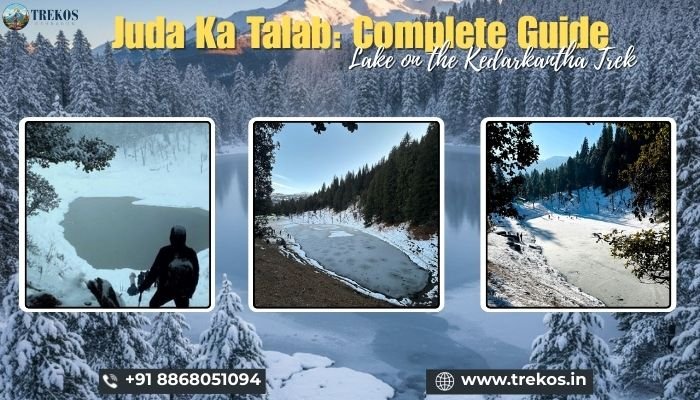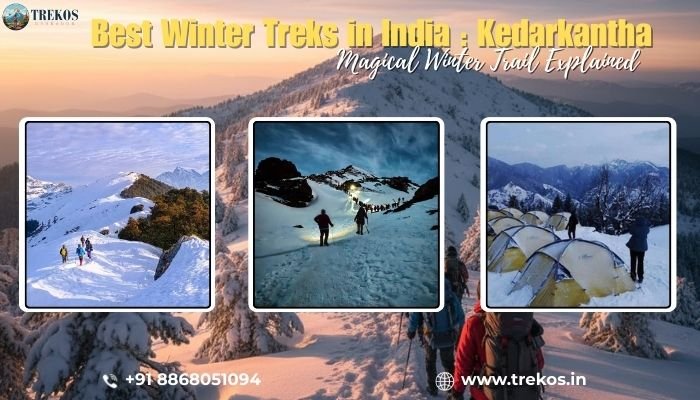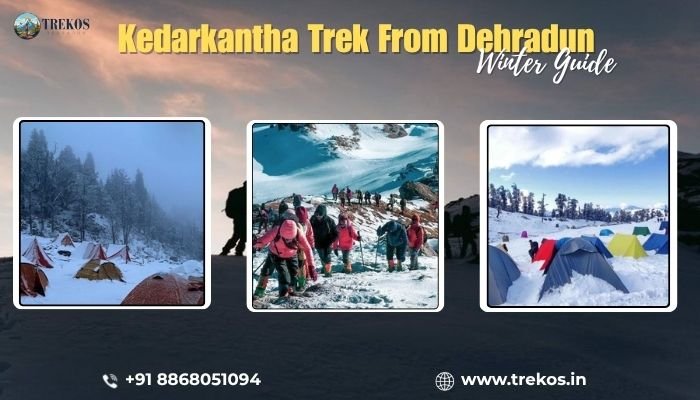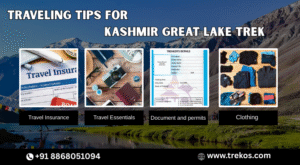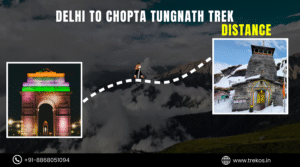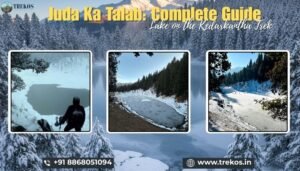About Hampta Pass Trek
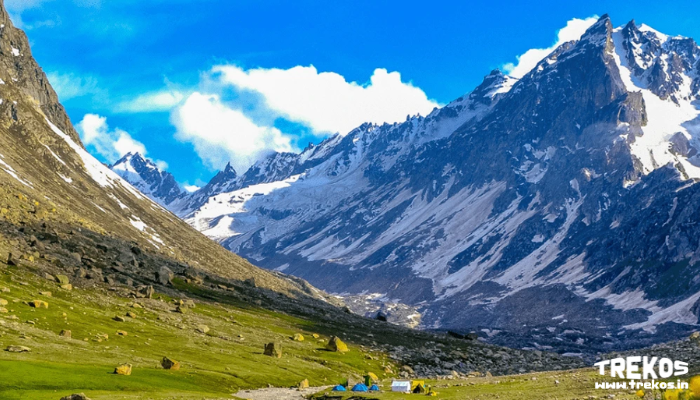
One of the most picturesque locations in the Indian Himalayas, the Hampta Pass Trek is a trek that connects the beautiful Kullu Valley to the arid landscape of Lahaul Valley. This moderate trek usually takes about 4-5 days and covers a distance of 26 kilometres or so at an elevation of gumbaz approximately 4270 meters (14000 feet) Hampta Pass. There is the Hampta trek, which features rolling green hills, dry mountains and spectacular views of the Pir Panjal and Lahaul range. The trek generally commences at Jobra and moves towards campsites such as Chika and Balu Ka Ghera, with an alternative route extending the trek to the beautiful Chandratal Lake. Best done between June to September Hampta Pass trek is ideal for novices who possess a good level of fitness ensuring it is a joy ride immersed in the wonders of nature. Do remember to pack well, get used to the conditions, enjoy the beautiful scenery because it will be a memorable trip.
Pre-Trek Preparation for Hampta Pass Trek
Hampta Pass Trek– A valley in the delightful Himachal Pradesh where you will enjoy marvelous views and diverse terrains. Since it is a popular trek, the preparation beforehand would be absolutely necessary if one wants to have a seamless and wonderful experience. Here’s all you need to gear up for this trek.
1.Understanding the Trek 
- Overview: Hampta Pass connects the lush valleys of Kullu and Lahaul at 14,100 feet. This will cover approximately 35 kilometers in about 5-6 days.
- Best Time to Trek: June to September is the best time to visit this trek, with great weather prevailing while wildflowers bloom and clear sky conditions.
- Difficulty Level: The trek is rated as moderate and can be undertaken by both beginners and experience trekkers. However, you would face steep ascents and some rocky tracks and, of course, diverse weather conditions.
2. Physical Preparation

Fitness Regimen: Good fitness, at least 4-6 weeks before the trek, is a must. You need to prepare yourself in:
- Cardio: Our cardiovascular exercises by jogging, cycling, or swimming. Do this for 30-60 minutes, 3-4 times a week.
- Strength Training: You should include the activities that build leg and core strength such as squats, lunges, and step-ups.
- Endurance Hikes: Take a few short walks around your neighborhood to get accustomed to unpredictable terrains.
Altitude Acclimatization: Be able to go to higher altitudes a few weeks prior to the trek to condition the body. Take a weekend trip to some hill station to accommodate lower oxygen levels.
3. Gear and Clothing

Footwear:
- Hiking Boots: Good quality, water-proof hiking boots, preferably with a good ankle support should be invested upon. Use them before the trek to avoid blisters caused by boot biting.
Clothing:
- Layer Up: Start with moisture-wicking base layers, insulating mid-layers (fleeces), and waterproof outer layers.
- Hiking Pants: Wear easily breathable pants that dries quickly.
- Warm Jacket: You will need a down or synthetic jacket if you expect cold nights and chilly mornings at high altitudes.
Accessories:
- Backpack: 40-50 litres; rain cover
- Trekking Poles: Balance the trekker and reduce strain on knees during descents
- Headlamp/Flashlight: For navigating in the dark
- Sunglasses and Sunscreen: Protect your eyes and skin from UV rays, especially at high altitudes.
4. Packing Essentials

Trekking Essentials:
- Sleeping Bag: A lightweight, insulated sleeping bag rated for low temperatures-about -5°C.
- Tent: In case you plan to camp, a strong, lightweight tent is guaranteed.
- Water Bottle: Safe and insulated for water or hydration pack.
Food and Cooking:
- Snacks: Energy bars, nuts, and dried fruits will provide quick boos as well.
- Cooking Gear: If one is self-catering then carry portable stove, utensils, as well as cookware, which is light weight.
First Aid Kit:
Compile your kit with essentials such as band-aids, antiseptic wipes, pain relief, altitude sickness tablets, as well as personal medications.
5. Health and Safety
- Drink Hydration: Hydrate with water and ensure a minimum intake of 3-4 liters of water a day. You can even carry purification tablets or a filter while trekking.
- Altitude Sickness: Awareness about Altitude Sickness Keep watch for headache, nausea, and dizziness. Ascend slowly and take rest days as required. Don’t underestimate the risks of severe symptoms; descend if the symptoms worsen.
- Local Guidelines: Treat the environment and cultures of the local villagers with respect. The so-called Leave No Trace principles: Pack in what you pack out and respect wildlife.
6. Navigation Skills

- Map and Compass: Know where you are going. Many treks are well-marked, but knowing how to use a physical map and compass will really benefit you if you do happen to go off track.
- Mobile Apps: Download trekking apps that include GPS navigation. Carry a power bank in case you need to charge your devices.
7. Itinerary Planning
- Sample Itinerary:
1. Day 1: Manali to Jobra (starting point of the trek) – acclimatization walk.
2. Day 2: Jobra to Jwara – scenic views of valleys.
3. Day 3: Jwara to Hampta Pass and descend to Siaguru – summit day.
4. Day 4: Siaguru to Chandratal Lake – absorb the beauty of that heavenly lake .
5. Day 5: Return to Manali by jeep. - Rest Days:
Add rest days to keep you having time to rejuvenate and explore.
8. Mental Preparation
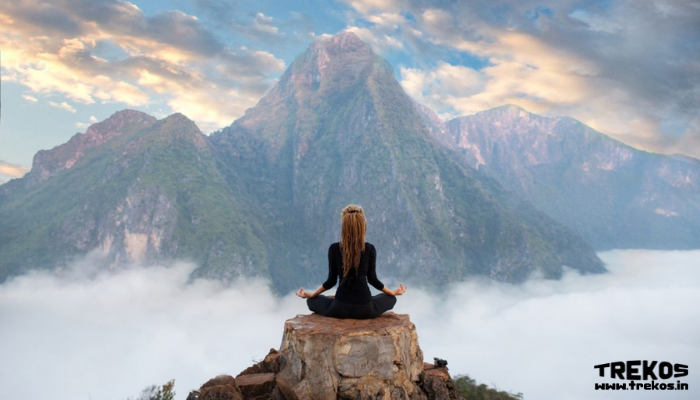
- Attitude: Prepare your mind with an attitude of readiness for problems, as trekking is quite unpredictable. Stay upbeat and flexible to enjoy your experience.
- Meditation or Breathing Techniques: This will keep your mind clear and peaceful when faced with a problem while on the trek.
9. Travel and Accommodation
- Getting There: The trek generally begins from Manali. Reserve your travel plans long in advance. This is especially important during the peak season.
- Accommodation: Choices range from campsites and guesthouses in Manali. In most cases, when you join a group trek, accommodations will be prearranged for you.
Summary
The experience of the promise of the beautiful Hampta Pass Trek is always remembered. One is thus prepared to go on an adventure with the right gears and a healthy body. Join and follow this journey in connecting with nature, creating memories that may last a lifetime. Happy trekking!
FAQs for how to prepare for Hampta Pass Trek
1. Best time to trek Hampta Pass?
Ideally, the best time for trekking to Hampta Pass would be in mid-June to September, as in this period, the weather is pleasant, flowers are in bloom, and minimal snow fall.
2. How fit should I be for this trek?
A good fitness routine will target for 4-6 weeks prior to the trek. Cardio, strength training, and endurance hikes are a must.
3. What equipment will I need for the trek?
Important equipment that one should have includes:
- Trekking shoes, waterproof
- Layered clothing, base, mid, and outer layers
- Good backpack size of 40-50 liters
- Sleeping bag rated for low temperatures
- Poles for trekking
- First aid kit, navigation tools
4. What should I carry for food and water?
Energy bars, nuts, dried fruits and a potable water bottle with water purification technique.




